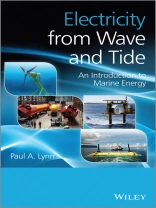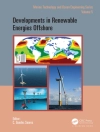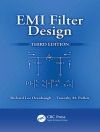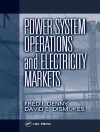A concise yet technically authoritative overview of modern
marine energy devices with the goal of sustainable electricity
generation
With 165 full-colour illustrations and photographs of devices at
an advanced stage, the book provides inspiring case studies of
today’s most promising marine energy devices and
developments, including full-scale grid-connected prototypes tested
in sea conditions. It also covers the European Marine Energy Centre
(EMEC) in Orkney, Scotland, where many of the devices are
assessed.
Topics discussed:
* global resources – drawing energy from the World’s
waves and tides
* history of wave and tidal stream systems
* theoretical background to modern developments
* conversion of marine energy into grid electricity
* modern wave energy converters and tidal stream energy
converters
This book is aimed at a wide readership including professionals,
policy makers and employees in the energy sector needing an
introduction to marine energy. Its descriptive style and technical
level will also appeal to students of renewable energy, and the
growing number of people who wish to understand how marine devices
can contribute to carbon-free electricity generation in the
21st century.
Daftar Isi
Preface ix
Acknowledgements xi
1. Introduction 1
1.1 Marine energy and Planet Earth 1
1.2 Marine resources 5
1.2.1 Waves of the world 5
1.2.2 Tides of the world 11
1.3 A piece of history 18
1.3.1 Working with waves 18
1.3.2 Tapping tides 23
1.4 Power, energy and performance 27
1.5 Into the future 34
References 37
2. Capturing marine energy 39
2.1 Ocean waves 39
2.1.1 Linear waves 39
2.1.2 Random waves 43
2.1.3 Wave spectra48
2.1.4 Wave modification 52
2.1.5 Wave measurement 56
2.2 Wave energy conversion 59
2.2.1 Introductory 59
2.2.2 Types of wave energy converter 60
2.2.3 Principles of wave energy capture 62
2.2.3.1 Floating devices 62
2.2.3.2 Tuning and damping 64
2.2.3.3 When waves meet WECs 68
2.3 Tidal streams 71
2.3.1 Hydrodynamics 71
2.3.2 Tidal harmonics 76
2.3.3 Predicting tidal streams 83
2.4 Tidal stream energy conversion 86
2.4.1 Introductory 86
2.4.2 Tidal stream turbines 89
2.4.2.1 Turbine sizes and power ratings 89
2.4.2.2 Extracting energy: the Betz Limit 93
2.4.2.3 Lift and drag 96
2.4.2.4 Rotor speed and power coefficient 102
2.4.3 Turbine siting 105
2.5 Research and development 108
2.5.1 Models and test tanks 108
2.5.2 The European Marine Energy Centre (EMEC) 111
2.5.2.1 Wave and tidal test sites 111
2.5.2.2 Research activities 121
References 124
3. Generating electricity 125
3.1 Introductory 125
3.2 Power take-off 126
3.3 AC electricity 130
3.4 Generators 141
3.4.1 Introductory 141
3.4.2 Synchronous generators 147
3.4.3 Asynchronous generators 151
3.4.3.1 Squirrel-cage and wound-rotor induction machines 151
3.4.3.2 Doubly-fed induction generators 157
3.4.4 Linear motion generators 162
3.5 Connecting to the grid 166
3.5.1 Setting the scene 166
3.5.2 Grid strength and fault levels 169
3.5.3 Electrical quality 173
3.6 Large-scale renewable energy 175
3.6.1 Introductory 175
3.6.2 Intermittency and variability176
3.6.3 Capacity credit and backup generation 179
References 183
4. Case studies: Wave energy converters 185
4.1 Introductory 185
4.2 Case studies 186
4.2.1 Pelamis 186
4.2.2 Oyster 192
4.2.3 Limpet and Mutriku 199
4.2.4 Wave Dragon 205
4.2.5 Power Buoy® 211
4.2.6 Penguin 216
References 221
5. Case studies: Tidal stream energy converters 223
5.1 Introductory 223
5.2 Case studies 224
5.2.1 Andritz Hydro Hammerfest 224
5.2.2 Atlantis Resources 229
5.2.3 Marine Current Turbines 234
5.2.4 Open Hydro 240
5.2.5 Pulse Tidal 245
5.2.6 Scotrenewables Tidal Power 251
5.2.7 Tidal Generation 258
References 262
Index 263
Tentang Penulis
PAUL A. LYNN obtained his B.Sc.(Eng) and Ph.D. degrees from Imperial College London, UK. After several years in the electrical/electronics industry, he lectured at Imperial College and the University of Bristol. As a retired academic, Dr. Lynn’s long-term interest in renewable energy has led to a trilogy of Wiley books (including this one), and three solar-powered boats. He is the author of ten other books and numerous technical papers and articles.












